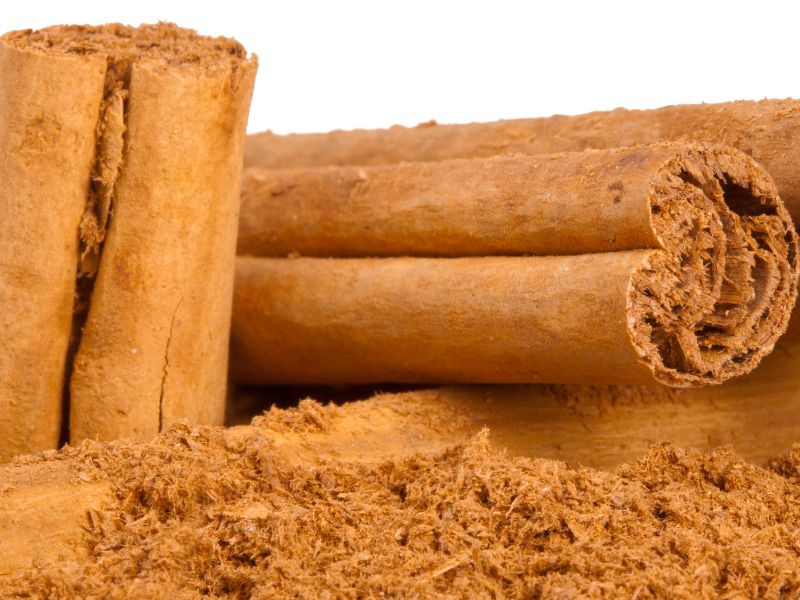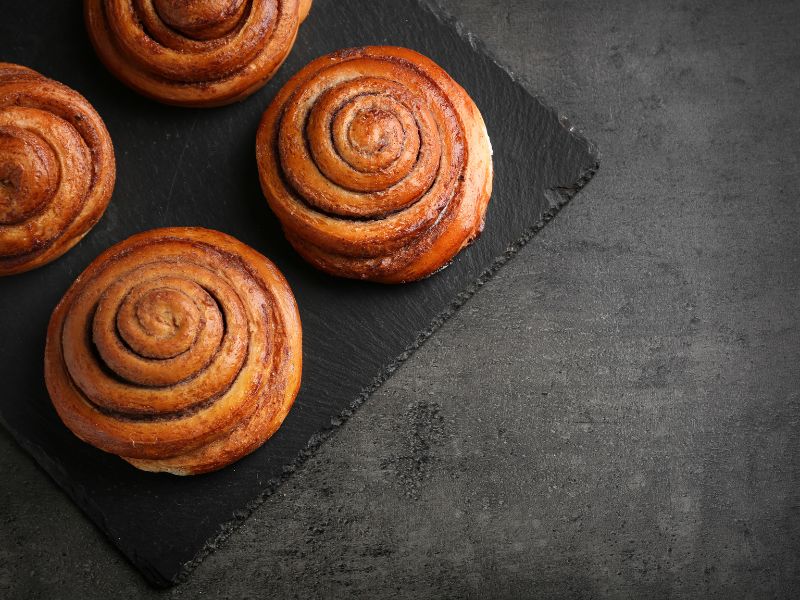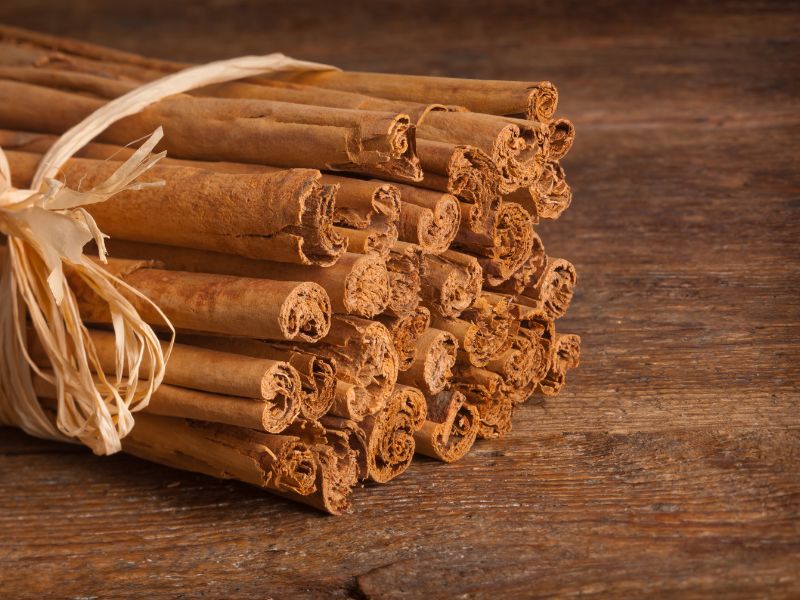Cinnamon is a popular spice when it comes to baking. Think Cinnamon rolls or apple pie. But did you know a bit of a masquerade is going on in your kitchen? Yep, that’s right! There is more than one type of cinnamon. The cinnamon you likely have in your kitchen is Cassia, mainly because it’s what most grocery stores sell due to its availability. Many even call it the “fake” cinnamon. On the other hand, Ceylon cinnamon, often referred to as the “true” cinnamon, isn’t as easy to find and has a heftier price tag to boot. Ceylon or cassia cinnamon, which one do you really have, and what’s the difference?
Where It All Began

Every spice has a story, traveling from its home to our kitchens. As we venture into the cinnamon world, let’s go back and find out ”Where It All Began.”
Ceylon Cinnamon
This special cinnamon comes from the beautiful island of Sri Lanka, which was once called Ceylon. Long ago, traders traveled across seas, facing tough weather, just to get this spice. People didn’t only use it for taste but also for its health benefits. Old Sri Lankan rulers protected their cinnamon trees because they were a sign of richness and strength.
Cassia Cinnamon
Cassia’s roots trace back to China and Indonesia. While it might not have the royal lineage like Ceylon, it has its own charm. It’s been used in traditional Chinese medicine for centuries and has been a staple in various Asian cuisines. Its strong and robust flavor made it a favorite for traders who wanted something with a longer shelf life. Over time, due to its abundance and lower cost of production, it found its way into kitchens worldwide, overshadowing Ceylon.
Spotting the Differences


When it comes to cinnamon, not all are created equal. Understanding the differences between Ceylon and Cassia can help you make better choices for your recipes and health.
Look and Feel
Ceylon cinnamon is more slender with a thin, layered bark that has a light tan color. Due to its fragile nature, it can crumble easily when you try to break it. On the other hand, Cassia is more robust. Its bark is thick and typically appears as a single rolled layer. It boasts a deep reddish-brown color and has a hard, wood-like feel to it.
Taste and Smell
Ceylon cinnamon offers a soft, sweet scent with a citrus undertone. Its flavor is subtle, ideal for recipes that require just a slight cinnamon hint. In contrast, Cassia is assertive and unmistakable. It has a potent aroma, and its taste can be quite spicy, especially when used generously.
Health Bits
Ceylon cinnamon is gentler on the body due to its lower coumarin content, a natural compound that’s fine in small quantities but can be concerning in larger amounts. On the other hand, Cassia contains a higher level of coumarin. Consuming it in large quantities frequently might not be ideal for liver health.
Read this to know more about coumarin.
In the World of Baking


Cinnamon and baking go hand in hand, but the type of cinnamon you choose can make a world of difference in your dish. Let’s take a look at how Ceylon and Cassia each bring their unique flavors to the baking table.
Ceylon Cinnamon
Desserts like light pastries, tarts, and other sweet treats are perfect when you want just a gentle touch of cinnamon without overshadowing other tastes. Consider warm drinks such as chai or mulled wine, where a soft cinnamon flavor can boost the overall taste. Additionally, this spice goes wonderfully with fruits like apples and peaches, making it an excellent choice for fruit pies and crumbles.
Cassia Cinnamon
This type of cinnamon is ideal for desserts that require a bold cinnamon taste, such as cinnamon rolls, spiced cookies, and some classic holiday goodies. When it comes to beverages, Cassia is the preferred choice for those who love a strong cinnamon punch in their coffee or hot chocolate. Moreover, it pairs well with deep flavors like chocolate and coffee, which is why it’s often favored for mochas and desserts with chocolate.
As an Amazon Affiliate, I may earn a commission from qualifying purchases. Full Disclosure
The Price Tag
When it comes to spices, sometimes you get what you pay for. Let’s break down the costs of Ceylon and Cassia cinnamon and understand why there’s a difference.
🔥 Cinnamon Showdown: Ceylon vs. Cassia 🌶️ |
||
|---|---|---|
| Type | Relative Cost | Reason |
| Ceylon | Higher | Requires careful processing and is less available |
| Cassia | Lower | More abundant and easier to produce |
| Brought to You by wearebaking.com 🍪 | ||
Ceylon Cinnamon
Ceylon cinnamon is typically more expensive because it’s rarer and needs more detailed processing. You’ll often find it in specialty or health food stores, which can also add to its cost. Even though it might cost a bit more, many believe its genuine taste and health advantages justify the extra expense, especially for those who value its distinct characteristics.
Cassia Cinnamon
Cassia is generally cheaper because it’s more common and simpler to produce. It’s readily available in many supermarkets and grocery stores, often just labeled as “cinnamon.” Cassia is a popular pick for those wanting a budget-friendly option, especially for regular use.
Making the Right Choice for Your Kitchen
Choosing the right cinnamon isn’t just about flavor; it’s about understanding your needs and what you value in your cooking and baking. Let’s weigh the pros and cons of Ceylon and Cassia to help you make an informed decision.
Ceylon Cinnamon
For those wanting a delicate and sophisticated cinnamon flavor, Ceylon is the top choice. It’s also a healthier option due to its lower coumarin content, especially for those who eat cinnamon often. Because of its higher cost, many choose to use Ceylon for special recipes or events where its distinct taste can truly stand out.
Cassia Cinnamon
Cassia is the way to go for those who crave a powerful cinnamon kick. It’s also budget-friendly, making it a good choice for daily cooking and baking. Thanks to its strong taste, Cassia can feel its presence in a wide range of savory or sweet dishes.
A Balanced Approach
Think about keeping both types of cinnamon in your kitchen. You can use Ceylon for certain recipes and Cassia for different ones. Try a direct comparison if you’re uncertain about which one to use. Prepare the same meal with each type of cinnamon and decide which flavor you like more.
Final Thoughts
Cinnamon, a popular spice, has more to it than meets the eye. With two main types, Ceylon and Cassia, each brings its unique flavor, history, and characteristics to the table. While Ceylon, often referred to as the “true” cinnamon, offers a delicate and refined taste hailing from Sri Lanka, Cassia stands out with its bold and robust flavor, predominantly from China and Indonesia. The differences don’t stop at taste; they extend to appearance, health, and even cost.
In the world of baking, the choice between Ceylon and Cassia can influence the outcome of a dish, with each type having its own set of ideal pairings. Also, the decision affects your budget. As with many things in life, the right choice often depends on your preferences, needs, and values. So the next time you grab some cinnamon, think about the deep history and variety it brings. And don’t forget, whether it’s Ceylon or Cassia, it’s all about enjoying life’s flavors.
Have you tasted “True” Cinnamon? Please leave me a comment below
And As Always
Keep On Baking!
Taianne
Share The Love

I’m Taianne, the owner and operator behind We Are Baking. Baking my first cake at age 11 hooked me on creating sweet treats. Though my interest faded during childhood, it was rekindled when I married my apple pie-loving husband. I love trying new recipes, tweaking classics, and helping others learn the science and art of baking. I started We Are Baking to share tips, tricks, and favorite recipes I’ve discovered over the years. When not in the kitchen, I enjoy spending time with family and friends. My goal is to inspire others to embrace their creativity through baking. Feel free to contact me with any questions!
Taianne@wearebaking.com

